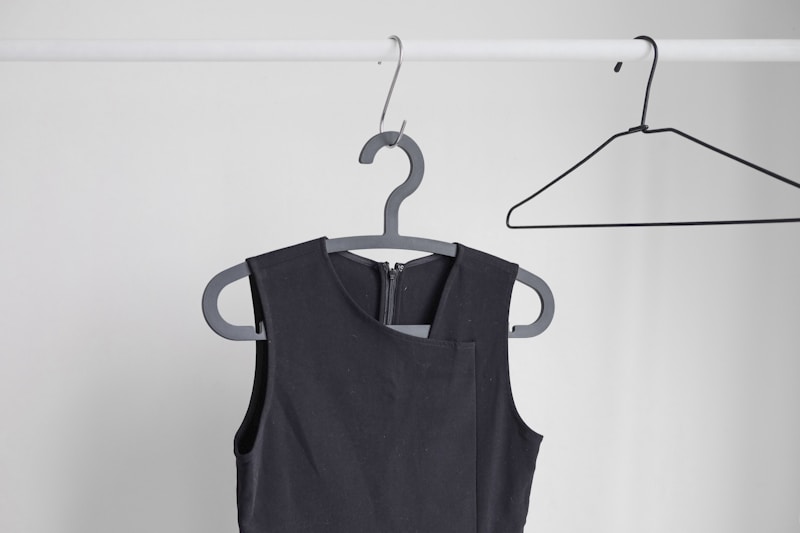Fitting for Your Dream Dress: A Comprehensive Guide to Achieving the Perfect Fit
Introduction
Choosing the perfect dress is a journey filled with excitement and anticipation. However, one of the most crucial aspects of this journey is ensuring the dress fits you like a glove. In this article, we will delve into the various ways to achieve the best fit for your dream dress, and we’ll explore relevant tips, tricks, and common questions that arise when selecting and fitting a dress.
Understanding Dress Fit
When it comes to the fit of your dress, several factors come into play. The right fit enhances your silhouette and boosts your confidence. Here are some key elements to consider:
- Body Shape: Understanding your body shape is essential for selecting a dress that complements your figure.
- Measurements: Accurate measurements are crucial in finding a dress that fits you perfectly.
- Dress Style: Different styles of dresses (A-line, sheath, ball gown, etc.) fit differently, and knowing which suits you best is vital.
Common Dress Styles Explained
| Dress Style | Description |
| A-line | Flattering for most body types, it cinches at the waist and flows out to the hem. |
| Sheath | Closer-fitting style, it hugs the body from top to bottom; great for showcasing curves. |
| Ball Gown | Features a fitted bodice and a full skirt, ideal for formal occasions. |
| Empire | High waistline just below the bust, it creates a flowing silhouette perfect for loose fits. |
The Importance of Accurate Measurements
Before purchasing your dream dress, you must take accurate measurements. This includes bust, waist, hips, and height. Knowing these measurements will guide you in selecting the right size and style for your body type. Remember to consider the following when measuring:
- Wear the right undergarments: The type of undergarments can influence the fit of the dress.
- Measure at the right time: Ideally, take measurements in the evening when your body is in its natural state.
- Get help if necessary: Sometimes, a second pair of hands can ensure more accurate measurements.
Finding the Right Dress for Your Body Type
Every body type is unique, and different styles will flatter different figures. Here’s how to find the perfect dress for your body type:
- Hourglass: Look for dresses that cinch at the waist, such as fit-and-flare styles.
- Apple: Opt for dresses with an empire waist that help draw attention away from the midsection.
- Pear: A-line dresses are flattering for pear-shaped bodies, highlighting the waist while skimming the hips.
- Rectangle: Consider dresses with ruffles or embellishments to create the illusion of curves.

Choosing the Right Fabric
The fabric of the dress plays a significant role in how it fits and falls on your body. Here are popular fabrics to consider:
- Satin: Gives a smooth and polished look, but may require tailoring for the perfect fit.
- Chiffon: Lightweight and flowy, ideal for layered styles.
- Lace: Adds elegance but can be tricky to fit without proper adjustments.
- Jersey: Stretchy and comfortable, it hugs the body well, flattering various shapes.
Tailoring Your Dress
Even after selecting your dream dress, it may not fit perfectly off the rack. Tailoring is essential for achieving that custom fit. Consider the following when getting your dress tailored:
- Find a good tailor: Research tailors in your area and read reviews to ensure quality service.
- Communicate your needs: Explain what you like and dislike about the fit to your tailor.
- Allow for adjustments: Depending on the complexity of the garment, multiple fittings may be necessary.
Frequently Asked Questions (FAQs)
As you embark on this journey of finding and fitting your dream dress, you might have some burning questions. Here are some common FAQs:
- How do I know if a dress fits properly?
- What should I wear to fittings?
- How far in advance should I start fitting my dress?
A dress fits properly when it flatters your figure, allows for comfortable movement, and doesn’t require constant adjusting.
Wear undergarments similar to those you’ll wear with the dress and comfortable shoes. This will give you a better idea of the overall look.
It's advisable to start fittings several months before the event to allow time for any alterations necessary.
Conclusion
Finding and fitting your dream dress is an exciting yet intricate process that involves understanding your body shape, taking accurate measurements, and possibly relying on a skilled tailor. By following the tips and guidelines outlined in this article, you'll be well on your way to achieving a perfect fit that enhances your beauty and boosts your confidence. Remember, a well-fitted dress is not just about appearance; it's about feeling great and celebrating your unique figure. Start your journey today towards that perfect fit!
Final Tip: Always allow some extra time for fittings and alterations, especially when planning for special events. Being proactive will ensure that you look and feel your best in your dream dress!